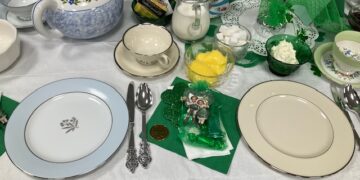
Thankfully, most of us still have plenty of water to drink, cook with, and bathe in. Due to public supplies from either wells or the river, those on municipal water systems are still moist. Those with private wells are also still wet as we draw from sources deep below the surface. Even cisterns are supplied by water trucks transporting from springs and streams when the rains fail.
All of these water sources, however, rely on groundwater. This precious treasure is found at varying depths and bubbles up in springs where the top of the groundwater, known as the water table, intersects the earth’s surface. These cool freshwater fountains feed our streams and rivers.
Where springs are absent, we drill down to reach the underground aquifers and pump it into our homes. Although many envision subterranean streams and lakes, most aquifers are areas of water that has saturated the empty spaces between rock and soil particles like tea between the ice cubes in our glasses. As we draw the water upward, the water table drops if the aquifer is not recharged with rainfall.
One of the most well-known underground reservoirs is the Ogallala Aquifer beneath the Great Plains. It underlies nearly 175,000 square miles and supplies water to grow crops and feed livestock. All of us have benefited from it having consumed some kind of food that grew there with the sustenance of that water. Whereas the Ogallala might be the biggest in the US, the Alter do Chão beneath South America is the world’s largest and is over 2½ times larger. It is sometimes called the underground ocean.
Groundwater is often very pure and until mechanical well drillers tapped these buried reservoirs, they were a vast unseen and untouched resource. Early settlers never dreamed of the millions of gallons of water available to them below.
As more wells are drilled and more homes added to our municipal systems, we need to be constantly vigilant concerning our aquifers. They do have limits and can be depleted if overused. Water tables sometimes drop below well depths causing wells to “go dry.” Good stewardship of God’s creation is needed to ensure enough for all.
These vast underground reservoirs of water can also benefit us in another way. They can help us visualize God’s love. This incredible resource is even more abundant. Although invisible to our physical eyes, it is very real and readily accessible in all locations. We tap into God’s love through prayer rather than drilling but sometimes we must push through our own rocky doubts to reach the bountiful supply God desires to give us.
As we begin to draw from His vast quantity, God’s love waters our souls enabling us to produce abundant harvests of blessings. Spiritual fruit such as joy, peace, patience, kindness, goodness, gentleness, faithfulness, and self-control begin to grow from our lives’ branches that benefit others as well as ourselves.
Most wonderful is when we allow His love to so permeate our lives that it intersects the surface and we become springs of His living water nourishing and refreshing all. And unlike groundwater, we never have to worry about exhausting God’s infinite supply. In fact, His love often becomes apparent through showers of blessings that recharge our souls daily.
As we pray for nourishing rains, let us enjoy the water we do have and may it remind us of God’s unlimited free source of invigorating love. And let’s share it with others. Blessings, George





























